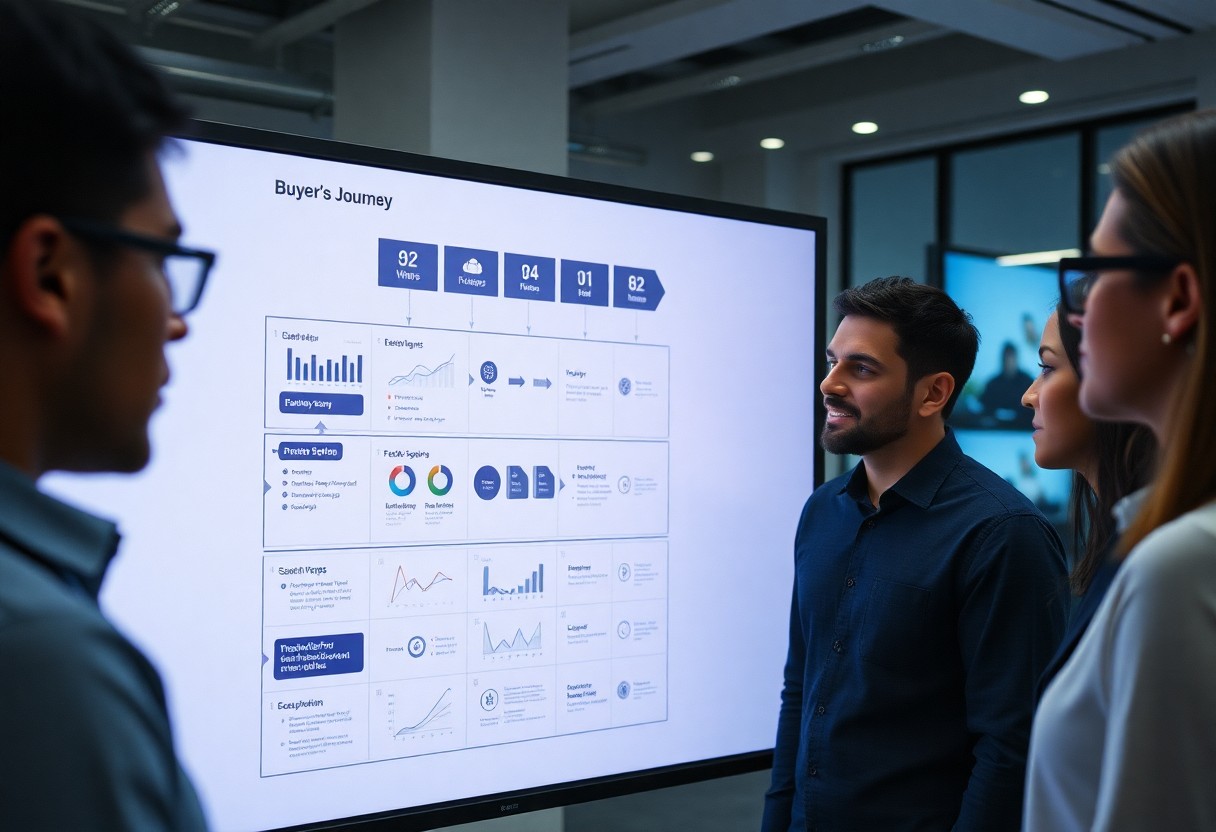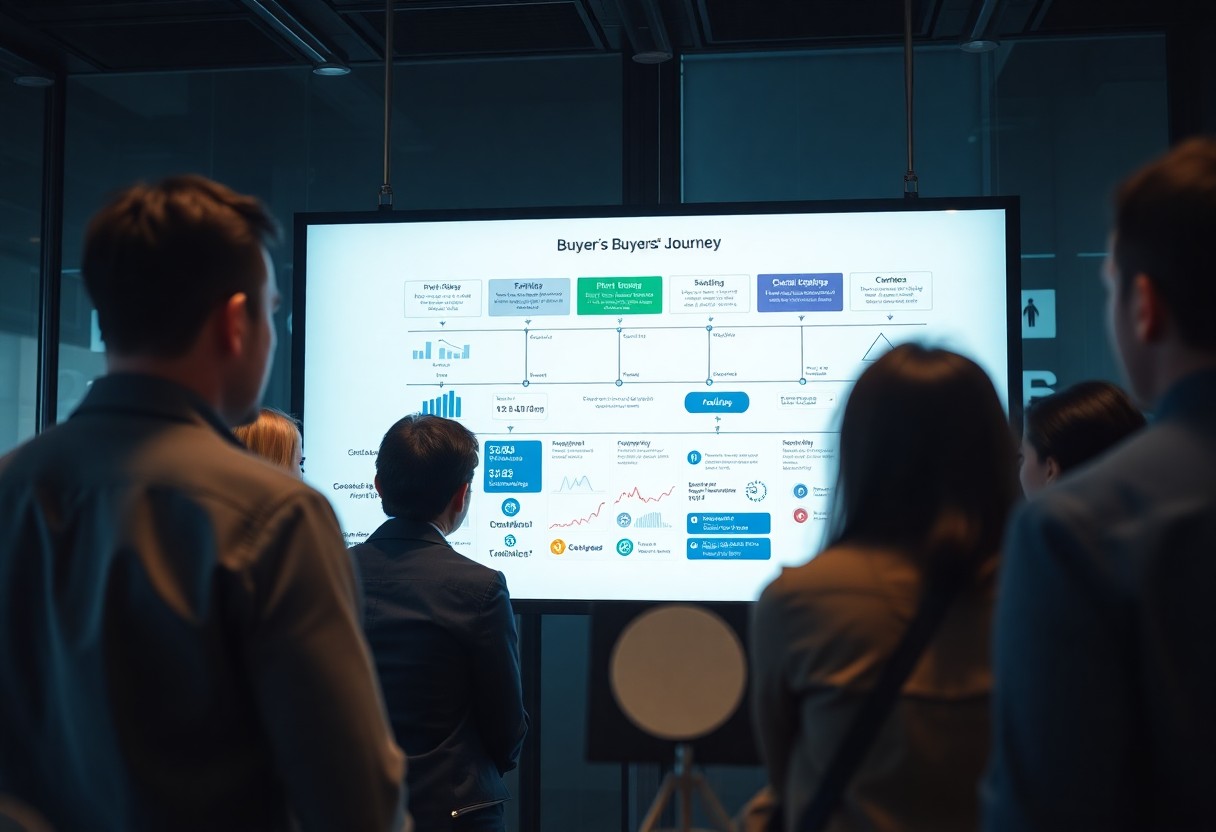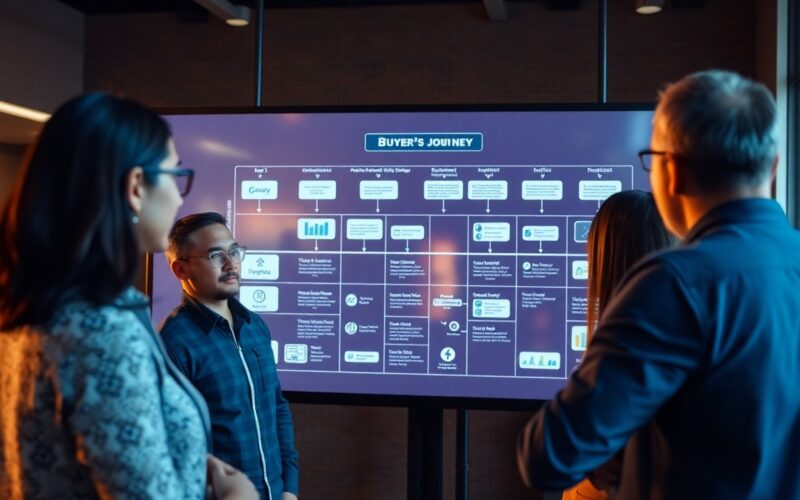With the ever-evolving landscape of consumer behavior, understanding customer intent is more important than ever. By identifying and aligning with your buyer’s journey, you can enhance engagement and drive conversions effectively. This insight allows you to tailor your marketing strategies to better meet the needs of your audience, ensuring that you address their pain points and motivations at every stage. Join us as we explore techniques to decode customer intent and optimize your approach for greater business success.
Understanding Customer Intent
While navigating the complexities of marketing, understanding customer intent allows you to explore deeper into what motivates your target audience. It helps you identify not just where your customers are in their buying journey, but also the reasons behind their actions, leading to more tailored marketing efforts.
Definition of Customer Intent
For every interaction a customer has with your brand, there is an underlying purpose or motivation. This concept is referred to as customer intent, which encompasses the reasons customers take specific actions throughout their buying journey, whether they aim to gather information or make a purchase.
Importance of Understanding Customer Intent
Importance of understanding customer intent lies in your ability to engage effectively with potential buyers. By recognizing their needs and motivation, you can tailor your marketing messages to resonate on a more personal level.
This understanding can significantly boost customer engagement and conversion rates. When you cater to the specific intents of your audience, you build trust and foster relationships that encourage loyalty. By aligning your strategies with customer intent, you enhance your brand’s reputation as a resourceful guide throughout the buying process, which ultimately drives sales.
Types of Customer Intent
For you to effectively address your audience, recognizing the different types of customer intent is important. These intents can generally be categorized as:
- Informational Intent: Seeking knowledge or solutions.
- Navigational Intent: Looking for a specific website or brand.
- Transactional Intent: Ready to make a purchase or complete an action.
- Commercial Investigation Intent: Researching products or services before buying.
- Comparison Intent: Comparing various options or brands.
Perceiving these different intents can significantly inform your marketing strategy and content delivery.
Customer intent plays an integral role in influencing how you craft your messaging and tailor your customer experiences. Understanding these categories will help you better connect with your audience at each stage of their journey.
- Informational Intent: Discovering answers to questions.
- Transactional Intent: Engaging in ecommerce transactions.
- Commercial Investigation Intent: Evaluating products/services against one another.
- Navigational Intent: Finding specific websites or brands.
- Comparison Intent: Assessing different options before making decisions.
Perceiving the nuances of these intents allows you to tailor your customer touchpoints more effectively, providing a seamless experience in line with their expectations.
| Type of Customer Intent | Description |
|---|---|
| Informational Intent | Seeks knowledge or solutions |
| Navigational Intent | Looks for specific sites or brands |
| Transactional Intent | Ready to make a purchase |
| Commercial Investigation Intent | Researches products before buying |
| Comparison Intent | Compares products or brands |
The Buyer’s Journey
Many marketers overlook the complexity of the buyer’s journey, which encompasses the stages your potential customers navigate before making a purchase. Understanding this journey is crucial for aligning your strategies with their needs at each step, ensuring a smoother transition from consideration to conversion.
Stages of the Buyer’s Journey
One of the primary stages includes awareness, where your potential customer recognizes a problem or need. They then move to the consideration stage, evaluating different options and solutions, before reaching the decision stage, where they select a provider. Each stage frames the type and intent of your content.
The Interaction Between Intent and the Buyer’s Journey
By analyzing the interaction between intent and the buyer’s journey, you can better tailor your marketing strategies to meet your customers where they are. This insight allows you to provide information that aligns with their needs and intentions at each stage.
Further developing this concept, you should focus on identifying specific intents behind searches and interactions throughout the buyer’s journey. This involves creating targeted content that addresses pain points and delineates the differences among solutions. If you fail to capture your audience’s intent, you risk losing their interest and engagement. To optimize your efforts, continuously test and refine your approach, ensuring you remain relevant at every stage of their journey.

Identifying Buyer Intent
Your ability to effectively identify buyer intent can significantly enhance your marketing strategies. Understanding how your customers navigate their journey allows you to provide tailored content that resonates with their specific needs. By employing various techniques, you can better align your offerings with their evolving expectations and ultimately drive conversions.
Analyzing Customer Behavior
With careful analysis of customer behavior, you can gain insights into their preferences and decision-making processes. Tools like heatmaps and session recordings allow you to observe how customers interact with your website, revealing pain points and opportunities for improvement. By tapping into this data, you can refine your marketing approach to meet their needs more effectively.
Utilizing Search Queries
Search queries provide valuable insights into the specific needs and questions your customers have. By analyzing the terms that drive traffic to your website, you can uncover the intent behind their searches. This understanding enables you to optimize your content, making it more relevant to potential buyers at various stages of their journey.
Behavior analytics shows that certain search queries often correlate with specific buyer intents, such as informational, navigational, or transactional. By identifying high-intent keywords, you can create targeted content that speaks directly to users’ needs and enhances your visibility in search results. This alignment with their intent not only improves your SEO but also positions your products and services as credible solutions.
Leveraging Customer Feedback
On a deeper level, leveraging customer feedback can provide a wealth of knowledge about your audience’s preferences and pain points. Gathering insights through surveys, reviews, and testimonials is vital for understanding their experiences and expectations. By actively seeking this feedback and implementing changes, you can foster stronger connections with your audience.
Analyzing customer feedback allows you to pinpoint common themes that reveal underlying trends in buyer intent. When you listen to your customers and make informed adjustments, you demonstrate a commitment to meeting their needs, leading to increased loyalty and satisfaction. This ongoing dialogue gives you a competitive edge, keeping you in tune with your buyers’ evolving desires.
Aligning Marketing Strategies with Customer Intent
Once again, it’s vital to understand that your marketing strategies must be in sync with your customers’ intent. By aligning your approach with their journey, you’ll enhance their experience and optimize your conversion rates. A keen awareness of their needs and expectations will guide you through the decision-making process, ensuring that your efforts resonate with your target audience.
Content Marketing Alignment
After identifying the various stages of your buyers’ journey, tailor your content marketing to meet their specific needs at each stage. Whether it’s informative blog posts, engaging videos, or detailed guides, your content should provide value and build trust. The goal is to ensure that you are directing your audience toward informed decision-making.
Personalization Strategies
Strategies for personalization not only enhance user engagement but also create a tailored experience for your audience. By leveraging data-driven insights, you can offer personalized recommendations, targeted messages, and relevant content that aligns with their particular interests and preferences.
Considering factors such as browsing history, past purchases, and demographic information, you can craft a more personalized experience. This might include dynamic website content or segmented email campaigns, ensuring that your messaging is both timely and relevant. The more you personalize, the better you can address your customer’s unique needs, ultimately driving higher engagement and satisfaction.
Multi-Channel Approach
Across multiple platforms, your marketing efforts must be cohesive and targeted to the customer’s intent at each touchpoint. By diversifying your channels—be it social media, email, or search engines—you can reach your audience where they are most active, increasing your opportunity for engagement.
To effectively implement a multi-channel approach, ensure that your messaging is consistent across all platforms while still tailored to each specific channel. Utilize cross-channel tracking to measure effectiveness and adapt your strategy accordingly. This unified strategy not only enhances customer experience but strengthens brand recognition, leading to greater loyalty and trust.

Tools and Technologies for Intent Analysis
After understanding customer intent, the next step is to leverage the right tools and technologies that facilitate intent analysis. Using various platforms can significantly enhance your ability to align with your buyer’s journey. For insights on creating and aligning your content, explore How to Create and Align Your Content with the Buyer Journey.
Customer Relationship Management (CRM) Solutions
Customer Relationship Management (CRM) solutions are fundamental in tracking and analyzing customer interactions. By using these systems, you can gain insights into customer behavior, preferences, and pain points. This data enables you to tailor your marketing strategies and engage with customers more effectively, enhancing their overall journey with your brand.
Marketing Automation Platforms
One of the best ways to streamline your marketing efforts is through marketing automation platforms. These tools can help you automate repetitive tasks, segment your audience, and deliver personalized content based on user behavior. This segmentation makes it easier for you to respond to your customers’ needs as they progress through their journey.
Analysis of these platforms reveals their power in organizing and analyzing data related to customer behavior. By examining interactions across various channels, marketing automation helps you identify trends and preferences, delivering relevant content at just the right moments. This proactive approach can significantly enhance your customer engagement and conversion rates.
Artificial Intelligence and Machine Learning
For businesses looking to gain a competitive edge, incorporating artificial intelligence (AI) and machine learning (ML) into your intent analysis can be transformative. These technologies enable you to process vast amounts of data to identify patterns and predict future behaviors, allowing for highly personalized marketing strategies tailored to your audience’s specific needs.
Learning how to effectively implement AI and ML can lead to dramatically improved customer experiences. With these tools, you can analyze customer data on an unprecedented scale, developing insights that drive your marketing efforts forward. This adoption can foster deeper connections with your audience and ultimately yield greater customer loyalty and retention.

Evaluating and Adapting Strategies
For successful alignment with your buyer’s journey, you must continuously evaluate and adapt your strategies. This ensures that your marketing efforts resonate with your audience’s evolving needs and intent, ultimately improving engagement and conversions.
Monitoring Campaign Performance
Below, you’ll find various metrics that you can utilize to gauge the effectiveness of your campaigns. Tracking key performance indicators (KPIs) such as conversion rates, click-through rates, and engagement levels enables you to identify which aspects of your strategy are working well and what requires adjustment.
A/B Testing for Intent Alignment
For refining your campaigns, A/B testing is an effective method that helps identify which messages and strategies resonate best with your audience. This process involves creating two variations of a campaign and comparing their performance to see which one better meets your customers’ needs.
At the heart of A/B testing is data-driven decision-making. You can test headlines, email subject lines, or landing page layouts to find what aligns with your buyers’ intents more effectively. This iterative approach allows you to continuously enhance your strategy based on real feedback, ensuring you are always in tune with your customers’ preferences.
Gathering and Incorporating Feedback
At every stage of your marketing campaign, gathering feedback is vital. By leveraging surveys, social media interactions, and customer reviews, you gain insights that inform your strategy and help in aligning with buyer intent.
Hence, actively seeking out and incorporating feedback into your approaches allows you to understand your audience’s thoughts and preferences better. This not only fosters engagement but also enhances customer satisfaction, as you are showing your audience that their opinions are valued and directly influence your marketing tactics.
To wrap up
Upon reflecting, understanding customer intent is vital for effectively aligning with your buyer’s journey. By recognizing the different stages your potential customers navigate, you can tailor your marketing strategies to meet their specific needs and expectations. This approach not only enhances the customer experience but also increases the likelihood of conversion. As you apply these insights, you foster deeper connections with your audience, paving the way for long-term loyalty and success in your business endeavors.
FAQ
Q: What is customer intent and why is it important in the buyer’s journey?
A: Customer intent refers to the underlying motivation or reason behind a potential buyer’s actions—specifically, their desire to purchase a product or service. Understanding customer intent helps businesses tailor their marketing strategies, communication, and offerings to better meet the needs of their target audience throughout the buyer’s journey. This alignment increases the likelihood of conversion by ensuring that customers receive the relevant information at the right time.
Q: How can businesses identify where a customer is in their buyer’s journey?
A: Businesses can identify a customer’s stage in the buyer’s journey by analyzing their behaviors, such as website interactions, content engagement, and communication preferences. Utilizing tools like web analytics, customer feedback, and marketing automation software can provide insights into whether a customer is in the awareness, consideration, or decision stage, allowing businesses to adjust their marketing tactics accordingly.
Q: What types of content are most effective at addressing customer intent at different stages?
A: At the awareness stage, educational content like blog posts, infographics, and introductory videos can draw in prospects seeking information. In the consideration stage, case studies, comparison guides, and webinars help customers weigh their options. Finally, at the decision stage, testimonials, demos, and product reviews provide the reassurance needed to finalize their purchasing decision.
Q: How can businesses align their sales and marketing teams to better address customer intent?
A: To align sales and marketing teams, businesses should encourage collaborative planning and communication regarding target audiences, content creation, and messaging strategies. Establishing shared goals, using customer personas, and maintaining open channels for feedback and data sharing can create a unified approach to understanding and fulfilling customer intent throughout the buyers’ journey.
Q: What role does customer feedback play in understanding and improving customer intent?
A: Customer feedback serves as a vital tool for businesses to gain insights into their target audience’s perceptions, preferences, and pain points. Collecting feedback through surveys, reviews, and direct interactions allows businesses to refine their messaging and offerings to better align with the intensity of customer intent, enhancing the overall buying experience.
Q: How can technology assist in tracking and analyzing customer intent?
A: Technology plays a significant role in tracking and analyzing customer intent by offering tools like CRM systems, marketing automation platforms, and analytics software. These tools can monitor customer interactions across various channels, segment audiences based on behavior, and generate reports that identify trends in customer intent. This data enables businesses to create targeted marketing campaigns that resonate with customers at all stages of their journey.
Q: What are some common mistakes businesses make when trying to align with customer intent?
A: Common mistakes include not segmenting their audience effectively, relying on outdated or generic messaging, and failing to follow up with leads after initial interactions. Additionally, ignoring customer feedback or neglecting to personalize communication can result in missed opportunities to effectively address customer intent. Recognizing and avoiding these pitfalls enables businesses to foster better relationships with potential buyers and improve their conversion rates.


![10 Must-Have AI Tools for Startups & Small Businesses [2026]](https://smartgeekguide.com/wp-content/uploads/2025/10/top-10-ai-tools-for-startups-2026-xmg-360x240.jpg)






